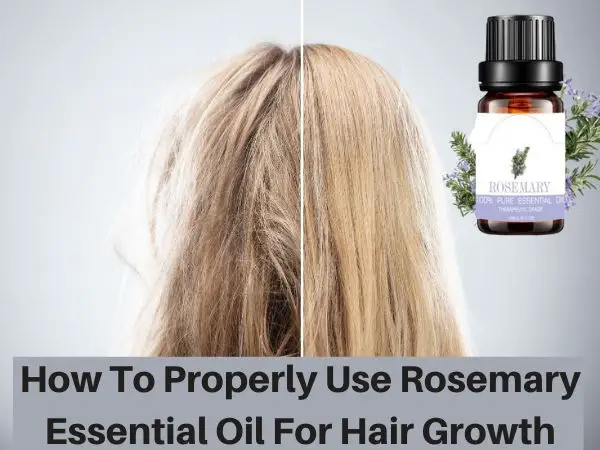Properly caring for my colored hair helps keep it vibrant and healthy. Changing my hair color is a fun and expressive way to refresh my style, highlight my personality, and make a bold statement.
Caring For Colored Hair
Colored hair requires extra care. Whether you’ve gone for subtle highlights, rich brunettes, vibrant reds, icy blondes, or vivid fantasy shades like blue or purple, you will need extra care.
The coloring process alters the hair’s structure, often leaving it more porous, fragile, and prone to fading. Without proper care, the color can lose its vibrancy quickly, and the hair itself can become dry, brittle, and unhealthy.
Luckily, with the right approach, you can extend your color’s life and keep your hair healthy, shiny, and strong.
In this guide, I will explore everything you need to know about caring for colored hair, before, during, and after the dyeing process.
Understanding Colored Hair
Before diving into care tips, it helps to understand what happens when you color your hair. Hair dye lifts the outer cuticle (the protective layer of the hair shaft) so pigment molecules can penetrate the inner cortex.
This makes the hair more porous, which allows color to absorb but also makes it more prone to losing moisture and pigment.
Permanent dyes: These penetrate deeply into the cortex and change the natural pigment. They give long-lasting results but often involve ammonia and peroxide, which can weaken the hair.
Semi-permanent dyes: These sit closer to the surface and usually don’t require harsh chemicals. They fade more quickly (about 8–12 washes), but they’re gentler on hair.
Temporary dyes: These coat the outer layer without penetrating, giving short-lived color that rinses out in 1–3 washes.
Bleaching: The most damaging process, as it strips natural pigment entirely. Bleached hair is often fragile, dry, and in need of constant care.
Pre-Coloring Hair Care
Healthy hair holds color better and withstands chemical processing with less damage. Preparing before you dye makes a huge difference.
Deep conditioning treatments
A week before coloring, treat your hair with a nourishing mask rich in natural oils, shea butter, or aloe vera. This builds up hydration reserves so your strands are less shocked by chemicals.
Protein treatments
If your hair feels weak, limp, or breaks easily, use a protein treatment (with keratin or hydrolyzed wheat protein). Protein strengthens the hair’s internal bonds, reducing the risk of breakage during coloring.
Clarifying shampoo
Use once, about 2–3 days before your appointment, to remove buildup of styling products, oils, or hard water minerals. Clean hair absorbs dye more evenly. Avoid using it too close to coloring day, as it can leave hair vulnerable.
Skip washing right before coloring.
Natural scalp oils act as a protective barrier against irritation. Try to have at least 24 hours of natural oils on your scalp before applying dye.
Avoid heavy styling products.
Don’t overload hair with oils, silicone serums, or heavy creams before your appointment, as they can block dye penetration.
Immediate After-Care (First 72 Hours)
Your freshly colored hair is in its most vulnerable state right after a dye job. The first few days are crucial for locking in pigment.
Wait before washing: Dye molecules take up to 72 hours to fully settle into the hair shaft. Washing too soon may rinse out unsealed pigment, leading to premature fading.
Gentle first wash: When you do wash, choose a sulfate-free, color-safe shampoo. Massage gently into the scalp—avoid rough scrubbing that can weaken the cuticle.
Condition generously: Use a color-protecting conditioner to smooth the cuticle and help lock pigment in place.
Avoid heat styling: Newly colored hair is fragile. Postpone straighteners, curling irons, or blow dryers for a few days to prevent extra stress.
Washing Colored Hair
Your washing routine is one of the biggest factors in how long your color lasts.
Sulfate-free shampoos
Sulfates are strong detergents that strip away oils and your color. Instead, use shampoos labeled “sulfate-free” or “for color-treated hair.” Ingredients like gentle surfactants clean without harsh stripping.
Limit frequency
Each wash releases pigment. Aim for 2–3 washes per week. If you get oily quickly, try dry shampoo between washes.
Cooler water is better.
Hot water opens the cuticle and accelerates fading. Wash with lukewarm water, then do a final rinse with cool water to seal the cuticle and enhance shine.
Clarifying shampoos
Great for removing buildup, but use sparingly (every 3–4 weeks). Overuse will fade the color quickly.
Moisture and Hydration
Chemical coloring leaves hair thirstier than ever. Without enough moisture, colored hair becomes rough, frizzy, and breakage-prone.
Deep conditioning masks: Apply at least once a week. Look for masks with hydrating oils (argan, coconut, avocado), humectants (glycerin, hyaluronic acid), and strengthening ingredients (silk proteins).
Leave-in conditioners: Daily hydration in lightweight form. These smooth cuticles reduce frizz and make detangling easier.
Hair oils: A few drops of argan, jojoba, or marula oil help seal in hydration. Apply mid-length to ends, avoiding roots to prevent greasiness.
Moisture-protein balance: Too much protein makes hair stiff and brittle, while too much moisture makes it weak and stretchy. Alternate moisturizing and protein-based treatments depending on your hair’s needs.
Protection Against Heat
Heat tools can undo weeks of careful care in one session if not used wisely. Always use heat protectants. These form a protective barrier and reduce moisture loss. Look for products with silicones, proteins, or natural oils designed for thermal protection.
Lower the temperature. Hair irons and curlers don’t need to be maxed out. Keep temperatures between 300–350°F (150–177°C). Finer or lighter hair needs even lower settings.
Air-dry when possible. Letting hair dry naturally reduces heat exposure. If you must blow-dry, use the cool setting or a diffuser on low heat.
Sun and Environmental Protection
Just like skin, your hair is vulnerable to the sun and environmental damage. Use leave-in sprays or serums with UV filters to prevent pigment breakdown caused by sun exposure.
Use cover-ups. Wide-brimmed hats, scarves, or protective hairstyles shield your hair from direct sunlight.
Chlorine bonds to hair proteins, causing discoloration (especially in blondes, which can turn green). Before swimming, apply a leave-in conditioner or wear a swim cap. Rinse hair immediately after.
Salt draws moisture out, leaving hair dry and brittle. Rinse after beach trips and reapply conditioner.
Extending Color Longevity
Even with the best care, color fades over time, but you can slow it down. Conditioners and shampoos with pigment help refresh tones between salon visits. They’re especially useful for red and fantasy colors, which fade quickly.
Use gloss treatments. These restore shine, reduce dullness, and enhance tone. Professional salon glosses last several weeks, while at-home versions give a quick refresh.
Touch-up timelines:
- Reds: Every 4–6 weeks (fades the fastest).
- Blondes: Every 6–8 weeks, plus purple toners to fight brassiness.
- Brunettes: 6–10 weeks; often low-maintenance.
- Fantasy/vivid colors: Every 3–4 weeks, unless refreshed at home.
Healthy Hair Maintenance
Long-lasting color depends on healthy hair. Conduct regular trims. Split ends make hair look dull and frizzy. Trim every 6–8 weeks to keep ends fresh.
A healthy scalp equals healthy regrowth. Use gentle scrubs, oils, or massages to increase blood flow and maintain a clean environment for new growth.
Avoid overlapping colors. Don’t repeatedly color already-colored sections. Apply dye mainly to roots and refresh lengths with glosses instead.
DIY vs. Professional Maintenance
Knowing when to go DIY versus salon saves your hair from unnecessary stress.
Salon care is best for bleaching, highlights, balayage, major color changes, and corrections. These require expertise to avoid severe damage.
Safe DIY care is best for root touch-up powders, semi-permanent glosses, and color-refreshing conditioners, which are manageable at home.
Avoid risky DIY dye. Overlapping bleach can cause breakage, and dark box dyes may be hard to remove, often requiring harsh color strippers later.
Special Care by Hair Color Type
Blonde/bleached hair: Extremely porous and prone to brassiness. Use purple or blue shampoos once a week to neutralize yellow or orange tones. Moisture masks are essential since bleaching strips natural oils.
Red hair: Red pigments are large molecules that slip out of the hair shaft easily, making this the fastest-fading color. Cold water washes, color-depositing conditioners, and minimal shampooing are key.
Dark hair: Dark shades may not fade as visibly, but they can become dull. Gloss treatments and shine-enhancing oils keep richness intact.
Fantasy/vivid shades: Bright blues, greens, and pinks fade extremely fast. Wash only in cold water, use pigment-refreshing conditioners, and avoid overexposure to sunlight.
Common Mistakes to Avoid
- Over-washing: Strips pigment and natural oils.
- Using sulfates: Harsh shampoos cause rapid fading.
- Skipping heat protectants: Direct heat damages already weakened hair.
- Ignoring scalp health: Leads to poor regrowth and dull hair.
- Over-processing: Frequent bleaching or coloring breaks hair’s internal bonds, leading to severe dryness and breakage.
Interesting Posts:
My Final Thoughts
Caring for colored hair is about maintaining both vibrancy and health. Hydrated, healthy hair not only feels soft and strong but also holds onto pigment better.
A thoughtful routine helps your color stay fresh, shiny, and eye-catching—whether you’re rocking natural tones or bold, vivid shades.
If you are interested in hair care and skin care, consider subscribing to my newsletter. Additionally, follow me on Pinterest to discover more amazing pins.








